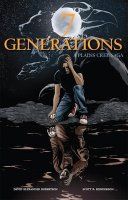The use of technology in the classroom has proven to increase students’ engagement. There are a number of valuable social medias that afford students the opportunity to interact with their classmates about a learning topic and share their information and ideas online. These tools can be valuable during any studies, including a unit on indigenous culture.
In my experience, I have found the following two forms of educational social media to be most beneficial in the classroom: Edmodo and Google Apps for Education.
For those of you unfamiliar with Edmodo, it allows students to share their information with others through a platform that looks similar to Facebook (without the privacy issues). Students can access files that have been linked by teachers and can also share links with the class. If you have assigned a group activity, such as to co-create a digital version of an indigenous story, students can share their work with others via Edmodo. Teachers can track students’ performance on a task and can also collaborate with other teachers around the world, possibly teachers who are members of the First Nation or who have a deeper understanding of the culture than themselves.
Google Apps for Education (GAFE) allows each student to access shared documents or presentations through Google Drive. For example, the teacher could make a unit outline using Google Presentations. Students would then have access to the slides from each lesson, even at home, and they can add information to these presentations throughout the unit. The first slide might include a KWL Chart. As homework, students can add what they already know and what they would like to learn. Students can update this chart throughout the unit, adding what they have learned.
Using technology to teach indigenous studies can help make the topic appealing to today’s tech savvy students. If the goal is to get Junior/Intermediate/High School students interested in indigenous culture, social medias such as Edmodo and GAFE can be building blocks toward reaching that outcome.

